The First FM in Houston (and Texas)
The month of August, 1946, was a momentous time in Houston; the papers reported on major developments on the local scene frequently. Early in the month, General Foods announced it was buying the old Ford assembly plant on Navigation for its Maxwell House Coffee division. Ford had abandoned the plant before World War II and it had been used as a factory for the assembly of airplane parts during the war, then as a warehouse by Pepsi. Maxwell House had been based in Houston since 1907. (Incidentally, the facility still produces coffee but General Foods sold it just last year). About the same time, ads announced the establishment of a new Phillips 66 distributorship for Houston and South Texas. W.S. ‘Bud’ Adams had arrived in town from Oklahoma to head the Ada Petroleum Company.
The travel editors of the papers were gadding about the southern hemisphere, reporting on the wonders to be found by Houston travelers there. Houston International Airport, now known as Hobby, had been certified as an International Air Gateway earlier in the year and Pan Am was offering flights to Havana, Caracas and Santiago; Braniff and Chicago and Southern Airways were also planning direct flights.
Houstonian Howard Hughes, bedridden, recuperating from near-fatal injuries suffered in the crash of a plane he was test piloting, announced from his hospital bed he had invented a fully adjustable bed consisting of 16 separate platforms, each independently adjustable, and had his engineers build it for him to alleviate his misery.
On the broadcasting front The Settegast-Kopf Singers had passed the 500 mark of consecutive live, weekly concerts on KPRC, on their way to setting an all time record for such performances in Houston. Meanwhile the directors of the funeral home proudly announced they had taken delivery on the first new Cadillac hearses to be received since before the war.
Also on the broadcasting front Mrs. John Wesley Graham, who had appeared on the first Houston Post concert on WEV in May, 1922, was still going strong on the radio, presenting her 15th Annual Talent competition; she had a weekly program on KTRH.
And on August 22 Roy Hofheinz announced he had put the first FM station in Houston (and Texas) on the air.
Hofheinz had been too young to play a role in the launch of AM broadcasting in Houston but his biographer Edgar Ray says that that he was determined to make a mark in the industry and be the first to get an FM station on the air in Texas, even though he knew he had to make a dash from behind to do so. By the time he received a Construction Permit, subject to Engineering Conditions, there were already 6 other applicants with Construction Permits statewide including 2 in Houston. In addition, FM had been used by the military during the war and there was virtually no equipment available and copper wire was extremely difficult to obtain. But Hofheinz knew broadcasting equipment and knew what he needed, plus he was a wheeler-dealer. As he had with KTHT-AM earlier in the decade but with much greater urgency, he set to work to get his FM on the air, running up an $800 long distance bill in just 2 weeks, calling all over the country trying to locate equipment. His initial grant of a Construction Permit subject to engineering approval was issued by the FCC on August 2, 1946, the same day a Construction Permit was issued for KTRH-FM on 99.3 mc. The Chronicle bragged that KTRH-FM would be on the air in 6 weeks and be the first Houston FM but it would be 11 months before the station launched.
But as a result of his concerted efforts in just two weeks, on August 15, Hofheinz wired the FCC asking for permission to begin test broadcasts. By the afternoon of August 16th an antenna was on its way from New York on a Slick Air Lines cargo plane and a transmitter was on its way from New Orleans by truck and on the evening of August 17th, test broadcasts began from the KTHT studios in the Southern Standard Building at 711 Main. Then on August 22, just 3 weeks after the CP was issued, the Press and the Chronicle carried the announcement that KTHT-FM would begin regular broadcasts that afternoon on 98.5 megacycles, FM Channel 253, and would operate daily between 3 and 9pm.
KTHT-FM went on the air with only 250 watts but the Chronicle reported that would be upped to 1000 watts within a couple of weeks, boosted to 2000 watts by a double gain antenna. The license was for 250,000 watts and a new antenna was to be erected at 215 N. Ennis on the near east side.
There were only five radio stations in Houston at the time and Roy Hofheinz owned two of them but between the two he put out only 500 watts.
Initially all programming was transcribed but there were plans to originate live programming on the FM; none of the programming duplicated KTHT-AM.
Hofheinz told the papers not only was KTHT-FM the first FM in Houston and Texas but was also the first FM anywhere to be sustaining. Programming was sold in one hour blocks with sponsors receiving one 60 second commercial per quarter hour. Business Manager Ted Hills said 5 sponsors had already signed on, a department store, a bank, 2 radio distributors and a public utility. There were estimated to be only 1500 FM receivers in Houston capable of receiving transmissions in the 88-108 mc band, perhaps another 2500 capable of receiving the earlier 42-50 mc band, but inexpensive converters for the older sets were said to coming to market soon.
For his achievement in getting a sustaining FM station on the air, Hofheinz was elected first President of the Frequency Modulation Association of America in 1947 and held the post for 2 years according to his biographer. I have not been able to find out anything about this organization.
The upgrades that were promised took longer than anticipated and it was not until December 2nd that a half page ad in the Press announced the extension of programming from 1pm to 10pm daily, all of it sustaining, with a boost to 1000 watts. The call letters also were flipped on that day to KOPY-FM. The ad touted KOPY as Houston’s newest radio station and Texas’ First FM and acknowledged that there were few sets so offered demonstrations at all the advertisers who had agreed to set up receivers in public areas so listeners could stop in and experience the new technology. The list of advertisers included Foley’s, City National Bank, Zenith Radio, Houston Transit Co., Stromberg-Carlson Radio, Black Brothers Furniture, Automatic Sales Co., and Houston Radio Supply Co.
Neither the Post or Chronicle took notice of the announcement of the upgrade and call letter change and none of the three dailies was printing daily program schedules for the FM station as they were for the 4 existing AM stations. By the time the Chronicle started printing FM program schedules, on June 30, 1947, when KTRH-FM signed on, listings indicated KOPY had cut back to 6 hours a day of air time.
According to White's Radio Logs, the station moved to 97.9 mc in the fall of 1949, presumably to accomodate a new FM in Galveston which had been allotted 98.7. The 98.5 frequency was later allocated to Port Arthur.
Hofheinz had always vowed that his radio stations would be profitable or he would shut them down and he pulled the plug on KOPY in the spring of 1950 due to declining ad revenues. Radio listings indicated that it was only simulcasting KTHT-AM programming at that time.
Nationwide, early FM broadcasters faced a long road to viability. According to Walter B. Emery’s Broadcasting and Government many were compelled to leave the air for lack of audience or advertising revenue. In 1949, there were more than 700 FM stations in operation, but by 1956 that had dwindled to 530 and many were simply duplicating AM programming. In 1949 more than 200 authorizations for FM stations were voluntarily returned to the FCC. In 1950, the year KOPY went silent, there were 35 new FM licenses granted by the FCC and 169 deletions. There were at least 2 other FM stations in the Houston area that made it on the air in the late 40s but did not last, KREL-FM, Baytown, and KLUF-FM, Galveston, and there was KXYZ-FM which operated for just over 5 years then went silent for 8 years before returning to the air. There were also other permits issued for FMs in the Houston area which never got on the air at all.
The original call letters of Houston’s first FM are now in use on Country Legends, 97.1, which is licensed to Cleveland, TX, and has a transmitter near Shepherd. The KOPY-FM calls are in use on a station in Alice, TX; the station now operating on 98.5 mHz, KTJM -FM, serves the Houston market from a transmitter near Devers and is licensed to Port Arthur and is not related in any way to the earlier FM. The original transmitter site on N. Ennis is still in use; it was the longtime site of the tower for KQUE-FM and KLTN-FM, 102.9 MHz, still operates from that facility while KHMX-FM uses the site as a back-up.
The owners of the Houston Post and KPRC were apparently miffed that Hofheinz had beat them on the air with his station. Three days after KTHT-FM signed on, on Sunday, August 25, 1946, a big article appeared in the Post about a new FM station for Houston - KPRC-FM - which the article said would be on the air by the end of the year. The article bragged about the pioneering role of KPRC-AM in Houston radio and the superiority of FM for symphonic broadcasts but no mention was made of an earlier station in the lower FM band in the early 40s that had been licensed to the Post. No where in the article was the claim made that KPRC-FM would be Houston’s first FM but nowhere in the article were readers informed that they could already tune in to an FM station in Houston. The Post apparently never acknowledged the existence of the other station until January 9, 1947, more than 3 weeks after KPRC-FM had signed on, when the paper started printing the daily program schedule of by then KOPY-FM alongside the schedule for KPRC-FM.
The Chronicle had carried the news of the launch of KTHT-FM on August 22 but apparently did not report on the call letter flip on December 2nd, and did not start printing FM program schedules until June 30, 1947, when KTRH-FM signed on.
The Houston Press, although it carried news about and ads for KTHT-FM/KOPY-FM and other FMs throughout it’s history, apparently never printed program schedules for FM stations.
Biographer Edgar Ray mentions KTHT-FM only a couple of times in passing and is careless with particulars. He says the license was issued early in 1946 and the call letter change took place on August 21. I had to skim every page of the Houston Press from January 1, 1946, thru August 22 to find the correct information, then continue skimming until December 2nd to get the correct date for the call letter flip. As a result, I know far more about what happened in Houston in 1946 than I ever imagined I’d know.



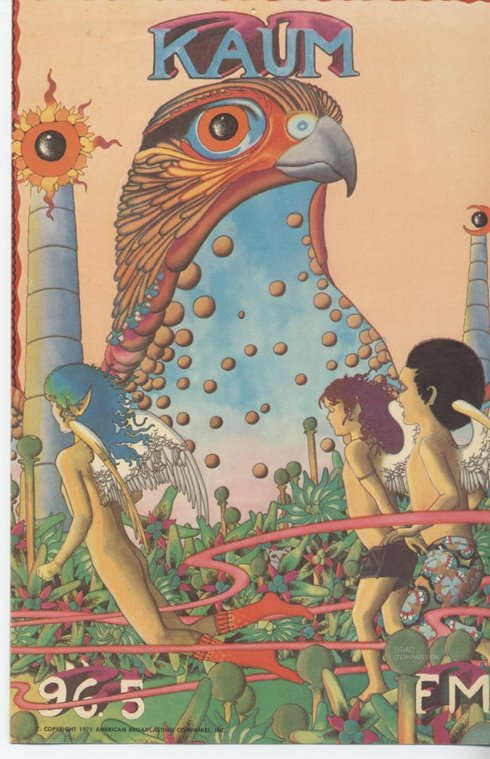
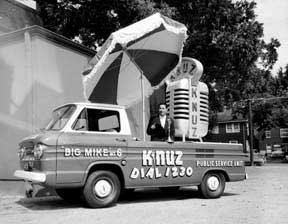


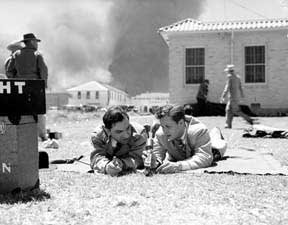
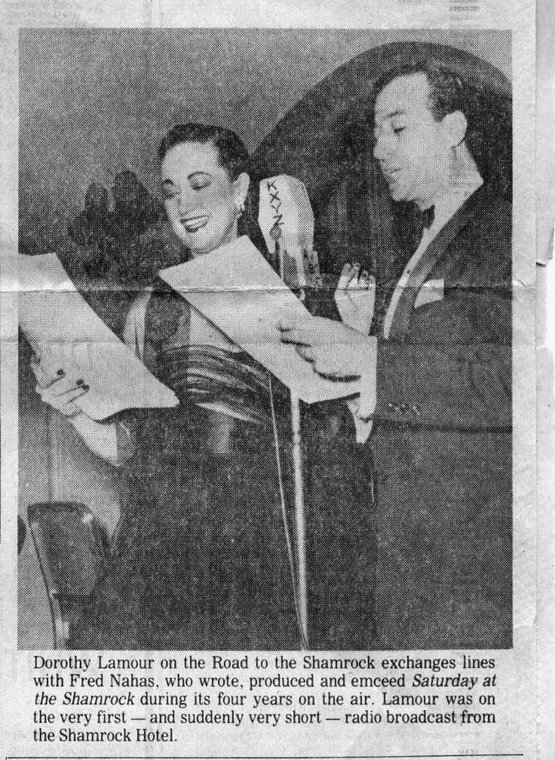
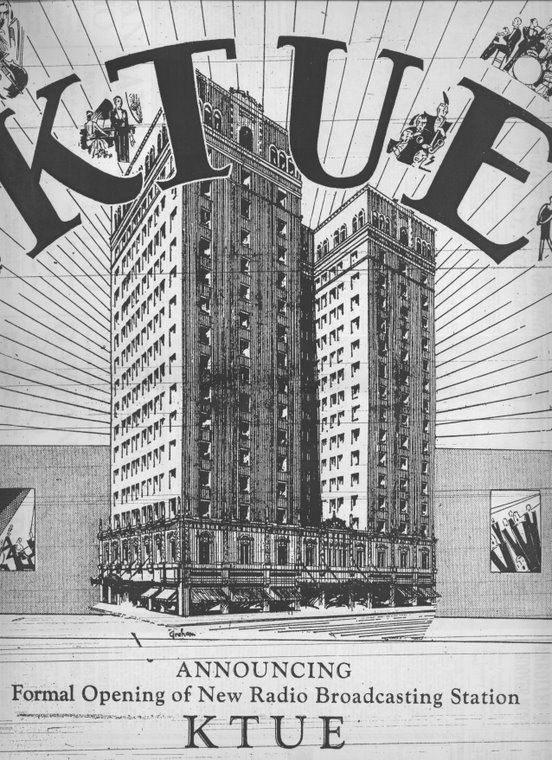
3 comments:
My father was O.B. Johnson and the radio engineer at KTHT who put the first FM station in Texas on the air. He passed away on 2/3/08 and his funeral was today.
If you take a look at the Houston Chronicle Obituaries of 2/7/08, you will see dad's. In addition, The Chronicle ran a feature obituary on him in today's paper - 2/8/08. Take a look!
I'm writing to you because in order for them to publish the info regarding the FM station, The Chronicle had to have a date and place. Dad had told us the story many times, but we didn't know the date. During our search for this info, we came across your blog.
Thank you for publishing this. May I ask you what made you do this research in January of 2008? Was it just so we would have the facts to back up our story about our dad?
Janan Kash
I am sorry to hear of your loss. I did most of that research in the Spring of last year but just got around to publishing it in January. I wish I had known your father was still alive back then, I would have loved to have talked to him.
I know this is a bad time to ask, but if, at some point down the road, some family member could take some time to share some of what your father related, I'd be very happy to hear it. Just contact me by e-mail on the Profile page.
I lost my own father just a few years ago and I know what you're going through. May you find comfort and solace in the memories of so many good years and in celebrating his life. God be with you.
I worked for OB at KPRC 1964-70. His real passion was photography having long since mastered radio. Some great OB stories, but most I cannot tell.
Post a Comment